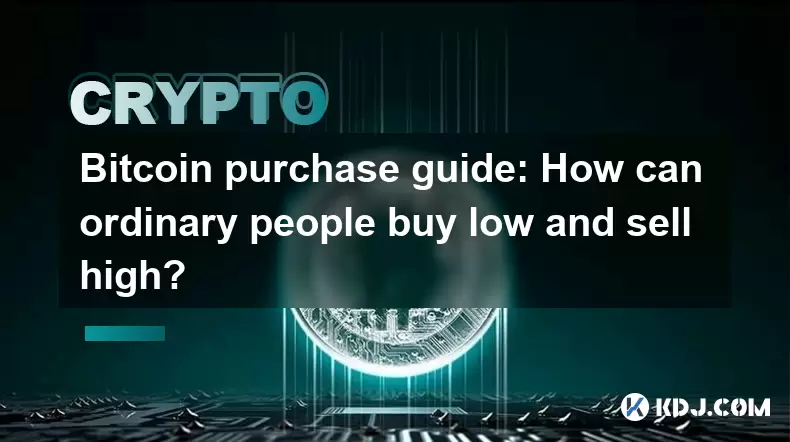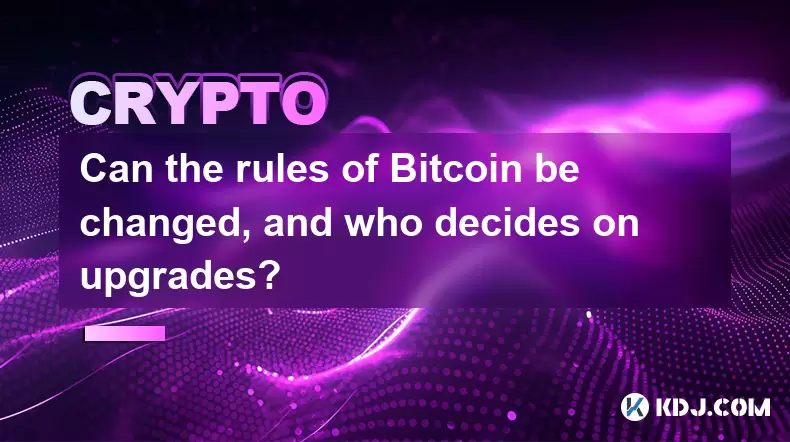-
 Bitcoin
Bitcoin $113900
-1.39% -
 Ethereum
Ethereum $3517
-4.15% -
 XRP
XRP $3.009
1.59% -
 Tether USDt
Tether USDt $0.9997
-0.04% -
 BNB
BNB $766.8
-1.41% -
 Solana
Solana $164.6
-2.38% -
 USDC
USDC $0.9998
-0.02% -
 TRON
TRON $0.3277
0.65% -
 Dogecoin
Dogecoin $0.2023
-1.67% -
 Cardano
Cardano $0.7246
0.05% -
 Hyperliquid
Hyperliquid $38.27
-4.77% -
 Sui
Sui $3.528
-0.52% -
 Stellar
Stellar $0.3890
-0.73% -
 Chainlink
Chainlink $16.16
-2.69% -
 Bitcoin Cash
Bitcoin Cash $539.9
-4.38% -
 Hedera
Hedera $0.2425
-2.00% -
 Avalanche
Avalanche $21.71
-0.97% -
 Toncoin
Toncoin $3.662
5.73% -
 Ethena USDe
Ethena USDe $1.000
-0.02% -
 UNUS SED LEO
UNUS SED LEO $8.964
0.35% -
 Litecoin
Litecoin $107.7
2.33% -
 Shiba Inu
Shiba Inu $0.00001223
-0.40% -
 Polkadot
Polkadot $3.617
-0.97% -
 Uniswap
Uniswap $9.052
-2.49% -
 Monero
Monero $295.1
-3.79% -
 Dai
Dai $0.9999
0.00% -
 Bitget Token
Bitget Token $4.315
-1.85% -
 Pepe
Pepe $0.00001060
0.11% -
 Cronos
Cronos $0.1342
-2.72% -
 Aave
Aave $256.0
-0.87%
Bitcoin purchase guide: How can ordinary people buy low and sell high?
To buy low and sell high, understand Bitcoin's volatile market, choose a secure exchange, and use strategies like DCA and technical analysis.
Jun 12, 2025 at 02:07 am

Bitcoin Purchase Guide: How Can Ordinary People Buy Low and Sell High?
Buying and selling Bitcoin effectively requires a strategic approach and a good understanding of the market dynamics. For ordinary people looking to enter the cryptocurrency market, it's essential to know how to purchase Bitcoin at a low price and sell it at a higher price to maximize profits. This guide will walk you through the process and provide strategies to help you achieve this goal.
Understanding the Bitcoin Market
The first step in buying low and selling high is to understand the Bitcoin market. Bitcoin, like other cryptocurrencies, is highly volatile, which means its price can fluctuate significantly in a short period. This volatility can be both an opportunity and a risk. To navigate this market effectively, you need to stay informed about market trends, news, and events that could impact Bitcoin's price.
Technical analysis and fundamental analysis are two key methods used to predict Bitcoin's price movements. Technical analysis involves studying past market data, primarily price and volume, to forecast future price movements. On the other hand, fundamental analysis looks at economic factors, such as adoption rates, regulatory news, and technological developments, to determine the intrinsic value of Bitcoin.
Choosing the Right Exchange
Selecting the right cryptocurrency exchange is crucial for buying and selling Bitcoin. Different exchanges offer various features, fees, and security measures, so it's important to choose one that aligns with your trading strategy and needs. Some popular exchanges for buying Bitcoin include Coinbase, Binance, and Kraken.
When choosing an exchange, consider factors such as:
- Security: Look for exchanges with strong security protocols, including two-factor authentication and cold storage for funds.
- Fees: Compare the trading fees and withdrawal fees of different exchanges to minimize costs.
- Liquidity: Higher liquidity means you can buy and sell Bitcoin more easily without affecting the market price significantly.
- User Interface: A user-friendly interface can make it easier to execute trades quickly and efficiently.
Setting Up Your Trading Account
Once you've chosen an exchange, the next step is to set up your trading account. Here's how you can do it:
- Visit the exchange's website and click on the sign-up button.
- Fill out the registration form with your personal information, including your name, email address, and password.
- Verify your email address by clicking on the link sent to your inbox.
- Complete the KYC (Know Your Customer) process by submitting the required identification documents, such as a government-issued ID and proof of address.
- Set up two-factor authentication (2FA) to add an extra layer of security to your account.
After your account is set up and verified, you can deposit funds into your exchange wallet. Most exchanges accept deposits via bank transfers, credit/debit cards, or other cryptocurrencies. Follow the on-screen instructions to deposit funds and start trading.
Strategies for Buying Low
To buy Bitcoin at a low price, you need to employ effective trading strategies. Here are some strategies to consider:
- Dollar-Cost Averaging (DCA): This strategy involves investing a fixed amount of money into Bitcoin at regular intervals, regardless of the price. Over time, this can help you buy more Bitcoin when the price is low and less when the price is high, averaging out your cost per Bitcoin.
- Monitoring Market Trends: Keep an eye on Bitcoin's price charts and use technical analysis tools to identify potential buying opportunities. Look for support levels, where the price tends to bounce back, as potential entry points.
- News and Events: Stay informed about news and events that could impact Bitcoin's price. For example, positive regulatory news or increased institutional adoption can drive the price up, while negative news can lead to a price drop.
Strategies for Selling High
Selling Bitcoin at a high price requires a different set of strategies. Here are some approaches to consider:
- Setting Profit Targets: Determine your profit targets based on your risk tolerance and market analysis. Once Bitcoin reaches your target price, consider selling to lock in your profits.
- Using Stop-Loss Orders: A stop-loss order can help you limit potential losses by automatically selling your Bitcoin if the price falls to a certain level. This can be particularly useful in a volatile market.
- Monitoring Resistance Levels: Use technical analysis to identify resistance levels, where the price tends to face selling pressure. Selling near these levels can help you maximize your profits.
Executing Trades
Once you've identified a buying or selling opportunity, it's time to execute your trade. Here's how you can do it:
- Log into your exchange account and navigate to the trading section.
- Select the Bitcoin trading pair you want to trade, such as BTC/USD or BTC/EUR.
- Choose the type of order you want to place. Market orders are executed immediately at the current market price, while limit orders allow you to set a specific price at which you want to buy or sell.
- Enter the amount of Bitcoin you want to buy or sell and review the details of your order.
- Confirm and submit your order. The exchange will execute your trade based on the order type and available liquidity.
Managing Your Portfolio
After buying Bitcoin, it's important to manage your portfolio effectively. Here are some tips to help you do that:
- Diversify Your Investments: Don't put all your money into Bitcoin. Consider diversifying your portfolio with other cryptocurrencies or traditional assets to spread your risk.
- Regularly Review Your Portfolio: Keep track of your investments and regularly review your portfolio to ensure it aligns with your financial goals and risk tolerance.
- Secure Your Assets: Consider moving your Bitcoin to a secure wallet, such as a hardware wallet, to protect your funds from potential exchange hacks.
Frequently Asked Questions
Q: How much Bitcoin should I buy to start with?
A: The amount of Bitcoin you should buy depends on your financial situation and investment goals. It's recommended to start with an amount you're comfortable losing, as the cryptocurrency market can be highly volatile. Many people start with small investments and gradually increase their holdings as they gain more experience and confidence.
Q: Is it better to buy Bitcoin during a dip or a bull run?
A: Buying Bitcoin during a dip can be a good strategy if you believe the price will recover and continue to rise. However, it's important to do your research and not try to time the market. Buying during a bull run can also be profitable if you're willing to hold onto your Bitcoin for the long term and ride out any potential corrections.
Q: Can I use leverage to buy Bitcoin and increase my potential profits?
A: Some exchanges offer leveraged trading, which allows you to borrow funds to increase your trading position. While this can amplify your potential profits, it also increases your risk of significant losses. It's important to fully understand the risks involved and only use leverage if you have a high risk tolerance and a solid trading strategy.
Q: How often should I check the Bitcoin market?
A: The frequency with which you should check the Bitcoin market depends on your trading strategy. If you're a day trader, you may need to monitor the market closely throughout the day. If you're a long-term investor, checking the market periodically, such as once a week or once a month, may be sufficient. It's important to find a balance that works for you and doesn't lead to overtrading or unnecessary stress.
Disclaimer:info@kdj.com
The information provided is not trading advice. kdj.com does not assume any responsibility for any investments made based on the information provided in this article. Cryptocurrencies are highly volatile and it is highly recommended that you invest with caution after thorough research!
If you believe that the content used on this website infringes your copyright, please contact us immediately (info@kdj.com) and we will delete it promptly.
- Bitcoin Strategy: Saylor's Not Hoarding, He's Building an Empire
- 2025-08-02 22:30:12
- Bitcoin Bloodbath: Macro Pressures and Liquidations Unleash Crypto Chaos
- 2025-08-02 22:30:12
- Worldcoin, Identity, WLD Price: Decoding the NYC Crypto Buzz
- 2025-08-02 21:10:12
- Shiba Inu: Utility and Community Strength Drive Crypto's Evolution
- 2025-08-02 21:50:12
- Crypto Donations, Trump PAC, and Bitcoin: A New York Minute on Political Coin
- 2025-08-02 20:30:12
- Crypto Market Under Pressure: Bearish Momentum and Rising Volatility Take Hold
- 2025-08-02 20:30:12
Related knowledge

What is the difference between holding Bitcoin on an exchange versus in a personal wallet?
Aug 02,2025 at 03:15pm
Understanding Custodial vs Non-Custodial ControlWhen holding Bitcoin on an exchange, users are essentially entrusting their assets to a third party. E...

Can governments shut down or ban Bitcoin?
Aug 02,2025 at 09:44am
Understanding Bitcoin’s Decentralized StructureBitcoin operates on a decentralized peer-to-peer network, meaning it is not controlled by any single en...

Can the rules of Bitcoin be changed, and who decides on upgrades?
Aug 02,2025 at 06:36am
Understanding Bitcoin's Governance ModelBitcoin operates without a central authority, which means no single entity has the power to unilaterally chang...

Who controls the Bitcoin network if there is no central company or bank?
Aug 02,2025 at 06:01pm
Understanding Decentralized Control in BitcoinThe Bitcoin network operates without a central authority, which raises the question of who controls it. ...

What is Bitcoin, and how does it function as a digital currency?
Aug 02,2025 at 04:01am
Understanding Bitcoin as a Digital CurrencyBitcoin is a decentralized digital currency that operates without the need for a central authority such as ...

What is the significance of the 21-week EMA in a Bitcoin bull market?
Jul 10,2025 at 06:56pm
Understanding the 21-Week EMA in Cryptocurrency AnalysisThe 21-week Exponential Moving Average (EMA) is a technical indicator widely used by traders a...

What is the difference between holding Bitcoin on an exchange versus in a personal wallet?
Aug 02,2025 at 03:15pm
Understanding Custodial vs Non-Custodial ControlWhen holding Bitcoin on an exchange, users are essentially entrusting their assets to a third party. E...

Can governments shut down or ban Bitcoin?
Aug 02,2025 at 09:44am
Understanding Bitcoin’s Decentralized StructureBitcoin operates on a decentralized peer-to-peer network, meaning it is not controlled by any single en...

Can the rules of Bitcoin be changed, and who decides on upgrades?
Aug 02,2025 at 06:36am
Understanding Bitcoin's Governance ModelBitcoin operates without a central authority, which means no single entity has the power to unilaterally chang...

Who controls the Bitcoin network if there is no central company or bank?
Aug 02,2025 at 06:01pm
Understanding Decentralized Control in BitcoinThe Bitcoin network operates without a central authority, which raises the question of who controls it. ...

What is Bitcoin, and how does it function as a digital currency?
Aug 02,2025 at 04:01am
Understanding Bitcoin as a Digital CurrencyBitcoin is a decentralized digital currency that operates without the need for a central authority such as ...

What is the significance of the 21-week EMA in a Bitcoin bull market?
Jul 10,2025 at 06:56pm
Understanding the 21-Week EMA in Cryptocurrency AnalysisThe 21-week Exponential Moving Average (EMA) is a technical indicator widely used by traders a...
See all articles

























































































